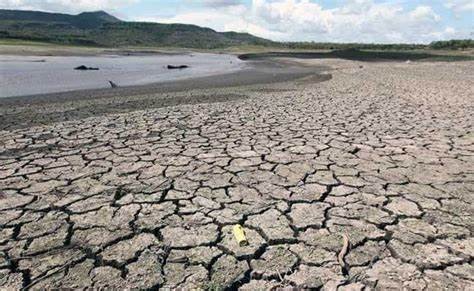Yes, you read it right—Pakistan water future is in danger. Since November, many parts of the country, including the capital, Islamabad, have been yearning for heavy rain. Dust lingers everywhere, trees have lost their lush greenery, and everything looks dull and withered. The season appears even sadder than autumn itself. Since January, the intensity of the sun’s heat has been increasing, and by February, it feels as if winter has fallen into a deep sleep during the day. The sun’s scorching rays are no longer pleasant for long.
Why is this happening? Why aren’t we getting rain? Has the winter weather pattern really changed? What will happen to us if the rains don’t come? These questions haven’t just been haunting my mind; many people have been asking me, “Miss weather, when will it rain? You cover climate issues—why has the weather changed?”
Then came the alarming forecast from the Meteorological Department: an early heatwave, above-normal temperatures from February to March, and lower-than-average rainfall. Seeking answers, I went straight to Dr. Tayyab, the head of the NDMA’s technical wing—someone I call the “weather scientist.” I laid out all these concerns before him: *What is happening? Why is this happening?
We humans are falling sick—colds, coughs, and viral infections are spreading rapidly—but what diseases is the Earth suffering from due to the lack of rain?
Noticing my concern, Dr. Tayyab spoke exclusively to me, as a representative of 24 News, revealing several alarming threats.
Dr. Tayyab explained that the winter weather pattern has changed. Every year, winter is shortening by one day—meaning that instead of lasting 45 days, it now lasts only 44. In the future, winters will continue to become drier, with an increasing number of dry days. There will be more warm days during winter, and the season will shrink further while becoming even drier.
He also revealed that, according to records from the past five years, rainfall during winter has significantly decreased. The proportion of winter rainfall has dropped from 20% to just 10%. Additionally, groundwater levels are depleting at a rate of 1 to 1.5 meters per year. In many areas of Pakistan, water has receded to depths of over 1,000 feet—a clear warning sign.
This is alarming because numerous underground organisms and biomes rely on groundwater for survival, playing a crucial role in maintaining soil health. However, while we continue extracting groundwater, we do not replenish it. Unfortunately, Pakistan ranks as the fourth-largest extractor of groundwater globally. If we do not take steps to recharge these reserves, we will face a severe groundwater crisis in the coming years.
When I mentioned that Islamabad must also have many areas facing this issue, Dr. Tayyab agreed and added that the depletion of water resources across Pakistan is already impacting agriculture significantly.
He said that the current situation of Mangla Dam is extremely critical and deteriorating, with a 35% water shortage, while Chashma Barrage is also facing a 50% water deficit.
This climate and environmental scientist also explained that the *biodiversity ecosystem* is being disrupted. In Pakistan, we have two main crop seasons: *Rabi and Kharif. The sowing and mid-period of agriculture depend on the availability of water, but rainfall, a key water source, has drastically declined. *Winter rainfall has decreased by nearly 40–50%.
Pakistan’s water supply mainly comes from *glaciers, snowmelt, and groundwater. Given the decreasing availability of these sources, we now urgently need **climate-smart agriculture—a farming system tailored to the changing climate patterns. Experts must take this issue seriously because if agriculture suffers severe damage, the entire way of life will be at risk.
It’s not just about this immediate threat—every year, Pakistan faces *severe smog* in November and December. Now, due to increasingly dry winters, smog has become a *permanent headache* for the country. According to the NDMA’s Technical Wing Head, smog will now **persist every November and December, significantly affecting public health.
He also noted that each year, winter is shortening by one day, and the four seasons are now shrinking into just two—we are jumping directly from winter to summer. Autumn and spring have almost disappeared.
Along with smog, heatwaves are another critical issue for Pakistan. The Meteorological Department recently predicted that February, March, and April will have below-normal rainfall and above-normal temperatures, with early-onset heatwaves. Dr. Tayyab explained that long dry periods create high-pressure systems, which heat up local air. This compressed, heated air generates thermokinetic energy, leading to heatwaves. Pakistan is likely to face repeated heatwaves this year.
This entire situation deeply concerns me, but is worrying enough? No. It’s time for everyone to take responsibility—using water cautiously, avoiding open waste burning, keeping water reservoirs clean, preventing deforestation, and planting trees*. Every citizen has a role to play.
Climate change is the result of human behavior, and now it’s time to change our actions before it’s too late—before we reach a point where **even possible solutions are no longer within reach. We must act responsibly as citizens.
The government and policymakers must wake up so that we don’t have to regret later, saying, “What’s the use of regret when the damage is already done?”
Keep me in your prayers.
By Rozina Ali



